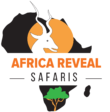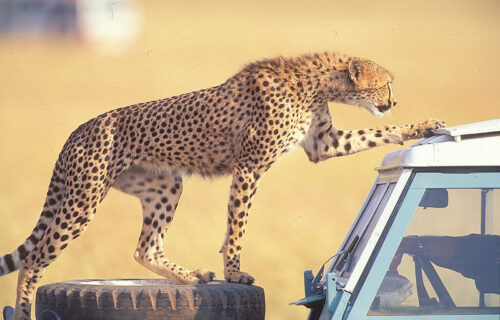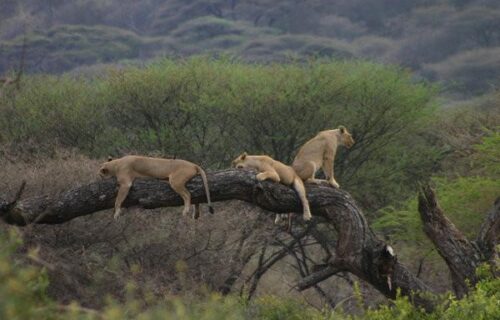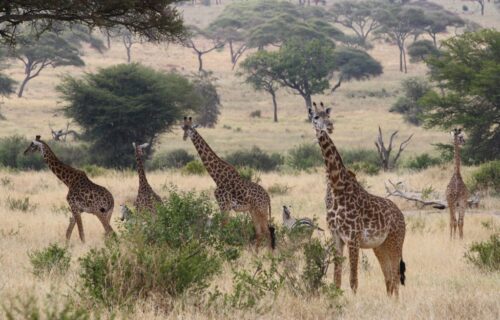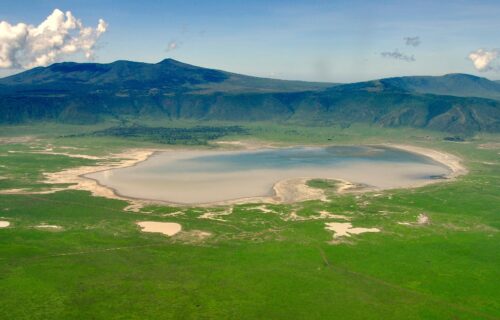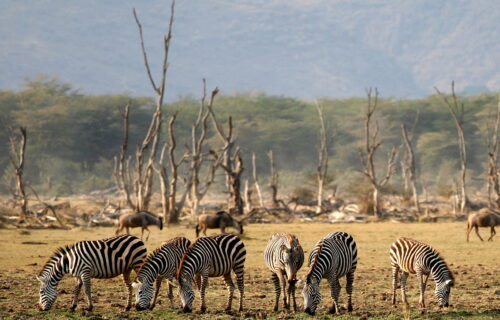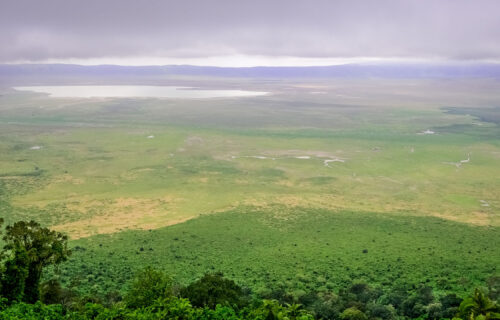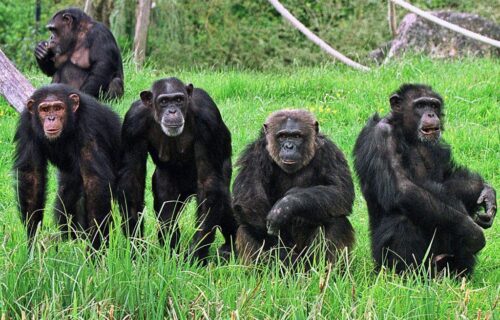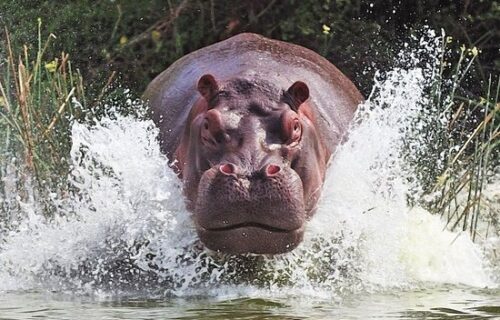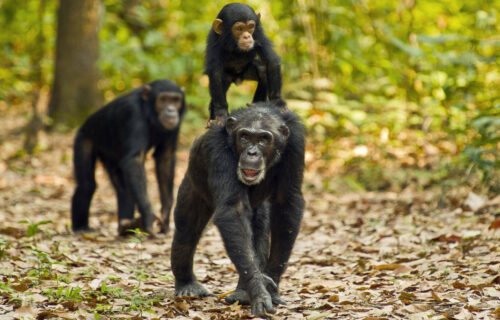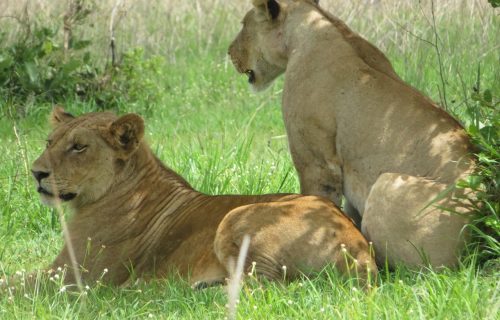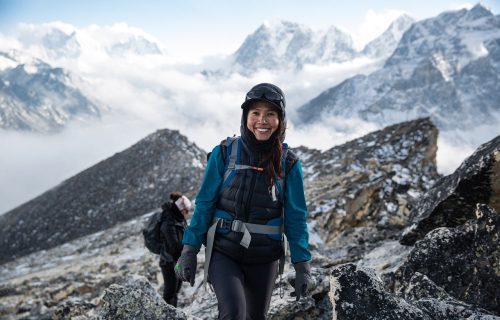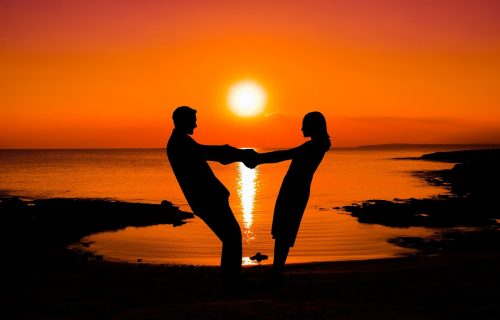Tanzania Safaris | Wildlife Tours & Holidays in Tanzania
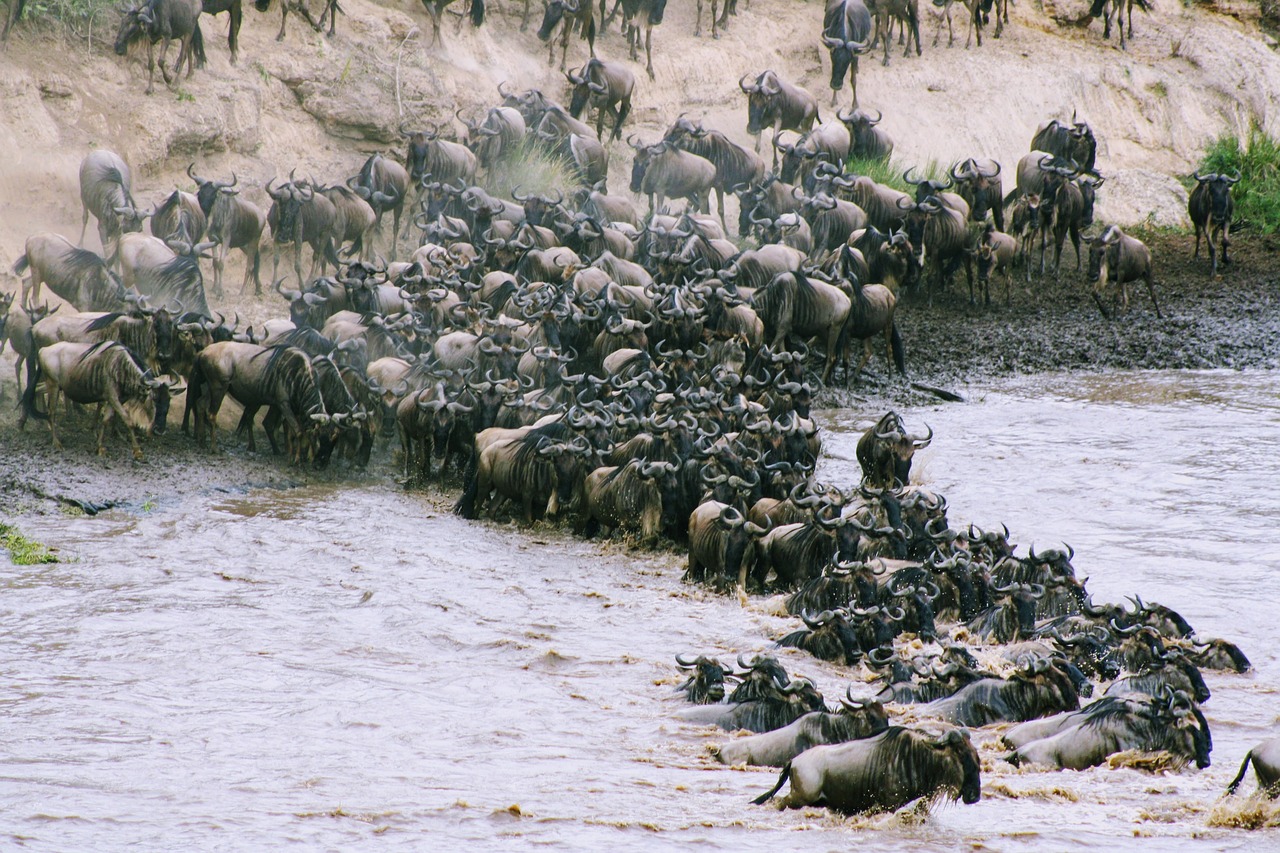 Tanzania safari and Zanzibar holiday packages. Tanzania, the largest country in East Africa, is a land of incredible diversity and beauty. From the snow-capped peak of Mount Kilimanjaro to the sun-kissed beaches of Zanzibar, Tanzania is a destination that has something for everyone.
Tanzania safari and Zanzibar holiday packages. Tanzania, the largest country in East Africa, is a land of incredible diversity and beauty. From the snow-capped peak of Mount Kilimanjaro to the sun-kissed beaches of Zanzibar, Tanzania is a destination that has something for everyone.
One of the most popular safari destinations in Africa is Tanzania. However, it might be difficult to know where to begin when selecting your Tanzania safari because of the abundance of must-see locations like the Serengeti and Ngorongoro Crater, as well as the charm of Zanzibar. Even more so if you want to take the family or witness the Great Wildebeest Migration! To make things simple, we have categorized our best Tanzania safaris by theme, so there is something for everyone.
One of Africa’s most remarkable safari locations is Tanzania. Big cats are very easy to spot, and the wildlife viewing is excellent. The Ngorongoro Crater and Serengeti National Park are home to all five of the Big Five, and each member can be found in a different Tanzanian national park or reserve. Given that about 40% of the nation is protected and designated for conservation, it is simple to drive from park to park during a two-week Tanzanian safari and seldom get outside of the bush.
Why Visit Tanzania?
Tanzania is a treasure trove of natural wonders, rich culture, and unforgettable experiences. Here are just a few reasons why Tanzania should be at the top of your travel bucket list:
a). Wildlife
Tanzania is renowned for its incredible wildlife, with the Big Five (lion, leopard, rhinoceros, elephant, and Cape buffalo) calling the country’s national parks and game reserves home. With its diverse landscapes and abundant wildlife, Tanzania offers a wildlife viewing experience like no other.
b). National Parks
Tanzania is home to some of the most famous national parks in Africa, including; Serengeti National Park, where you Witness the Great Migration, one of the most incredible wildlife spectacles on the planet. The Serengeti is home to an incredible array of wildlife, including lions, leopards, elephants, and cheetahs. Ngorongoro Conservation Area where you Explore the world’s largest intact caldera, a UNESCO World Heritage Site. The Ngorongoro Conservation Area is home to an incredible array of wildlife, including the Big Five. Tarangire National Park, where you Discover the park’s famous elephant populations and breathtaking landscapes. Tarangire National Park is known for its stunning natural beauty, with rolling hills, woodlands, and grasslands that are home to a diverse range of wildlife.
c). Beaches
Tanzania’s stunning coastline offers beautiful beaches and crystal-clear waters, perfect for relaxation and water sports. Some popular beach destinations include: Zanzibar: A semi-autonomous island with a rich history and stunning beaches. Zanzibar is known for its beautiful beaches, crystal-clear waters, and vibrant cultural scene.
Dar es Salaam: A bustling city with a beautiful coastline and vibrant cultural scene. Dar es Salaam is known for its stunning beaches, bustling markets, and vibrant nightlife. Pangani: A tranquil coastal town with stunning beaches and coral reefs. Pangani is known for its beautiful beaches, crystal-clear waters, and vibrant cultural scene.
d). Culture
Tanzania has a rich and diverse culture, with over 120 ethnic groups. Experience the country’s vibrant cultural heritage by:
Visiting local villages and learning about traditional customs and ways of life. Tanzania’s local villages offer a glimpse into traditional African life, with the opportunity to learn about local customs and traditions.
Attending a traditional Tanzanian dance performance. Tanzanian dance is known for its energy and vibrancy, with a range of traditional dances that showcase the country’s rich cultural heritage.
Exploring the historic town of Stone Town in Zanzibar. Stone Town is a UNESCO World Heritage Site, with a rich history and vibrant cultural scene. The town is known for its narrow streets, bustling markets, and historic architecture.
Visiting the National Museum of Tanzania to learn about the country’s history and culture. The National Museum of Tanzania is a treasure trove of information about the country’s history and culture, with a range of exhibits that showcase the country’s rich heritage.
e). Adventure Activities
Tanzania offers a range of adventure activities, including:
– Climbing Mount Kilimanjaro: Africa’s highest peak and one of the most iconic climbing destinations in the world.
– Going on a safari: Explore Tanzania’s national parks and game reserves, with the opportunity to spot the Big Five and other incredible wildlife.
– Snorkeling and diving: Explore Tanzania’s stunning coastline and coral reefs, with the opportunity to spot a range of marine life.
– Biking and hiking: Explore Tanzania’s stunning landscapes on two wheels or on foot, with the opportunity to spot wildlife and take in the breathtaking views.
f). Accommodation
Tanzania offers a range of accommodation options, from budget-friendly guesthouses to luxury lodges and resorts. Some popular accommodation options include:
– Luxury lodges: Tanzania’s luxury lodges offer stunning views, comfortable accommodation, and world-class service.
– Safari camps: Tanzania’s safari camps offer a range of accommodation options, from budget-friendly tents to luxury suites.
– Beach resorts: Tanzania’s beach resorts offer stunning views, comfortable accommodation, and a range of activities, including snorkeling, diving, and water sports.
g). Getting There
Tanzania is easily accessible by air, with several international airports located throughout the country. The main airport is Julius Nyerere International Airport, located in Dar es Salaam.
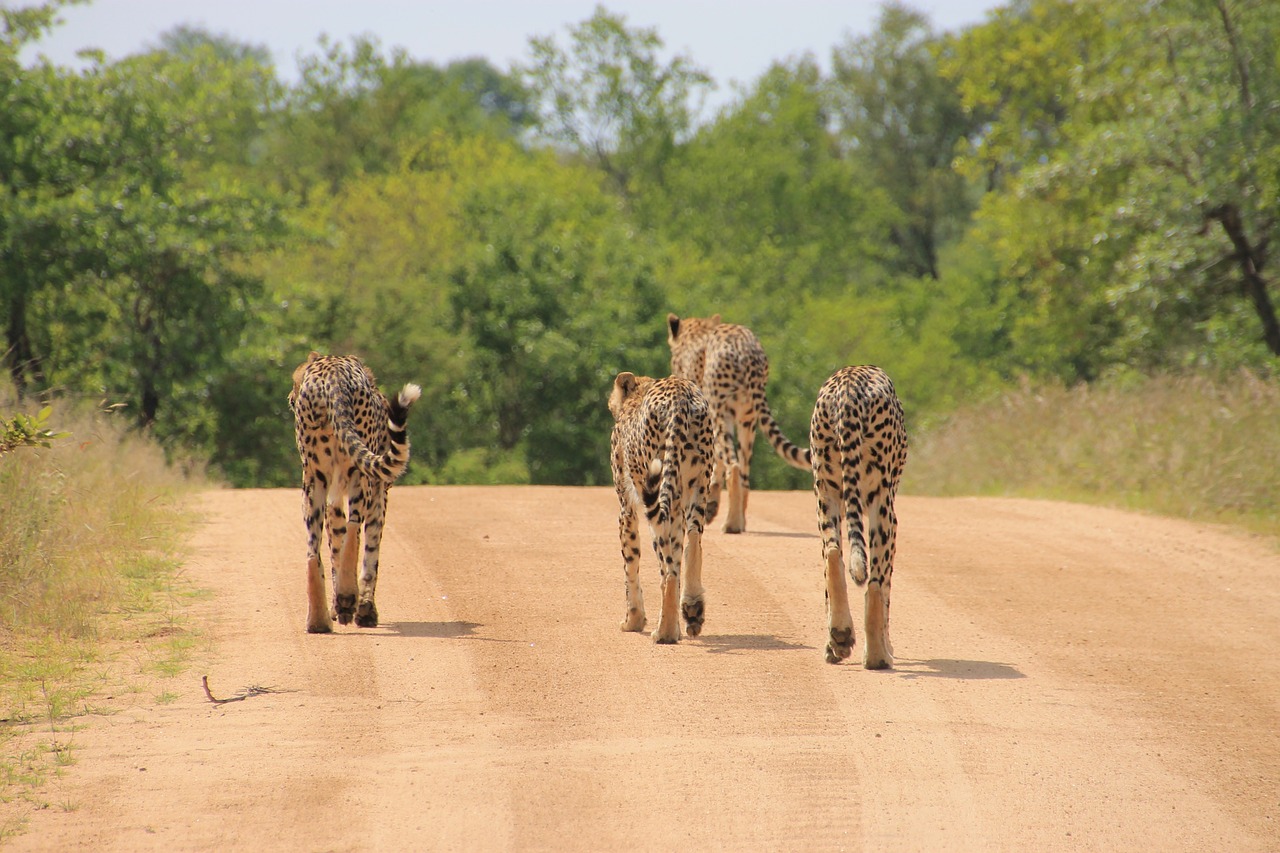
Cheetah: The World’s Fastest Land Animal
Tanzania’s National Parks and Game Reserves: A Wildlife Paradise
Tanzania is renowned for its incredible national parks and game reserves, offering unparalleled wildlife experiences. With its diverse landscapes and abundant wildlife, Tanzania is a haven for nature lovers and adventure seekers. From the snow-capped peaks of Mount Kilimanjaro to the sun-kissed savannas of the Serengeti, Tanzania’s national parks and game reserves are a treasure trove of natural wonders.
Top National Parks and Game Reserves in Tanzania
1. Serengeti National Park: Witness the Great Migration and marvel at the stunning natural beauty of this iconic park. The Serengeti is home to an incredible array of wildlife, including lions, leopards, elephants, and cheetahs.
2. Ngorongoro Conservation Area: Explore the world’s largest intact caldera, a UNESCO World Heritage Site, and home to an incredible array of wildlife. The Ngorongoro Conservation Area is a protected area that is home to the famous Ngorongoro Crater, as well as the Olduvai Gorge, a site of great archaeological significance.
3. Tarangire National Park: Discover the park’s famous elephant populations and breathtaking landscapes. Tarangire National Park is known for its stunning natural beauty, with rolling hills, woodlands, and grasslands that are home to a diverse range of wildlife.
4. Arusha National Park: Enjoy stunning natural beauty and a diverse range of wildlife in this beautiful park. Arusha National Park is located near the town of Arusha and is a popular destination for hiking and wildlife viewing.
5. Lake Manyara National Park: Marvel at the incredible birdlife and stunning natural beauty of this park. Lake Manyara National Park is known for its stunning natural beauty, with a diverse range of habitats that are home to a wide variety of wildlife.
6. Katavi National Park: Venture into the remote and rugged wilderness of western Tanzania. Katavi National Park is a hidden gem that is home to a diverse range of wildlife, including lions, leopards, and elephants.
7. Mahale Mountains National Park: Explore the stunning natural beauty and diverse wildlife of this park, located on the shores of Lake Tanganyika. Mahale Mountains National Park is known for its stunning natural beauty, with rolling hills, woodlands, and grasslands that are home to a diverse range of wildlife.
8. Gombe Stream National Park: Discover the park’s incredible chimpanzee populations and stunning natural beauty. Gombe Stream National Park is a small park that is home to a large population of chimpanzees, as well as other primates and a wide variety of birds.
9. Mikumi National Park: Enjoy stunning natural beauty and a diverse range of wildlife in this beautiful park. Mikumi National Park is located near the town of Morogoro and is a popular destination for wildlife viewing and hiking.
10. Udzungwa Mountains National Park: Explore the stunning natural beauty and diverse wildlife of this park, located in southern Tanzania. Udzungwa Mountains National Park is a hidden gem that is home to a diverse range of wildlife, including primates, birds, and reptiles.
11. Saadani National Park: Discover the park’s stunning natural beauty and diverse wildlife, located on the coast of Tanzania. Saadani National Park is a unique park that combines the best of both worlds, with stunning beaches and coral reefs, as well as a diverse range of wildlife.
Plan Your Tanzanian Wildlife Adventure Today!
Tanzania’s national parks and game reserves offer a wide range of activities and experiences, from wildlife viewing and hiking to camping and birdwatching. Whether you’re a seasoned safari-goer or just starting to plan your Tanzanian adventure, there’s something for everyone in this incredible country.
The Best Safaris in Tanzania | Wildlife Tours & Holidays
Tanzania, a land of unparalleled natural beauty, is home to some of the most incredible wildlife on the planet. A safari in Tanzania is the ultimate way to experience the thrill of witnessing majestic animals in their natural habitat. With its diverse landscapes, ranging from the endless plains of the Serengeti to the majestic mountains of the Kilimanjaro, Tanzania’s national parks and game reserves offer a wealth of opportunities for wildlife viewing.
At our company, we specialize in curating unforgettable Tanzania safari experiences that cater to diverse interests and budgets. Our team of experts, with years of experience in the industry, will work closely with you to design a personalized itinerary that exceeds your expectations.
Types of Tanzania Safari Packages
We offer a range of Tanzania safari packages, carefully crafted to provide an unforgettable experience. Our packages are designed to cater to different interests and budgets, ensuring that every traveler has a unique and enriching experience. Whether you’re a wildlife enthusiast, a thrill-seeker, or a culture vulture, we have a safari that’s right for you.
-
Wildlife Viewing Safaris
Explore Tanzania’s national parks and game reserves, including the Serengeti and Ngorongoro, and witness the incredible diversity of wildlife that calls these places home. Our expert guides will help you spot the Big Five – lions, leopards, elephants, buffalo, and rhinoceros.
- Visit the Serengeti National Park, home to the Great Migration
- Explore the Ngorongoro Conservation Area, a UNESCO World Heritage Site
- Spot the Big Five and other incredible wildlife, such as cheetahs, hyenas, and giraffes
- Take a guided walking safari to get up close and personal with the wildlife
- Enjoy a picnic lunch in the bush, surrounded by the sights and sounds of the wild
-
Beach Relaxation Safaris
Combine wildlife viewing with relaxation on Tanzania’s stunning beaches, perfect for those seeking a mix of adventure and relaxation. Our beach relaxation safaris offer the perfect opportunity to unwind and recharge.
- Relax on the beautiful beaches of Zanzibar, with its crystal-clear waters and powdery white sand
- Take a boat trip to explore the islands and coral reefs, with the chance to spot dolphins and whales
- Enjoy water sports, such as snorkeling and diving, to explore the underwater world
- Visit the historic town of Stone Town, with its narrow streets and bustling markets
- Enjoy a romantic sunset dinner on the beach, with the sound of the waves crashing in the background
-
Adventure Safaris
For the more adventurous, our packages include activities such as hiking, biking, and hot air balloon rides, providing a thrilling way to experience Tanzania’s great outdoors.
- Hike to the summit of Mount Kilimanjaro, the highest peak in Africa
- Go on a biking safari through the national parks, with the chance to spot wildlife up close
- Take a hot air balloon ride over the Serengeti, with breathtaking views of the savannah
- Go on a horseback riding safari, exploring the countryside and spotting wildlife
- Take a scenic flight over the national parks, with stunning views of the landscape
-
Cultural Safaris
Immerse yourself in Tanzania’s rich cultural heritage by visiting local villages and learning about traditional customs and ways of life.
- Visit a local Maasai village and learn about their traditions and customs
- Explore the historic town of Stone Town, with its narrow streets and bustling markets
- Attend a traditional Tanzanian dance performance, with the chance to join in
- Visit a local school and learn about the education system in Tanzania
- Take a cooking class and learn how to make traditional Tanzanian dishes
-
Birdwatching Safaris
Tanzania is a paradise for birdwatchers, with over 1,000 species of birds recorded in the country. Our birdwatching safaris offer the perfect opportunity to spot some of Africa’s most iconic bird species.
- Visit the Serengeti National Park, home to over 500 species of birds
- Explore the Ngorongoro Conservation Area, a UNESCO World Heritage Site and home to a wide variety of birdlife
- Spot iconic bird species, such as the lilac-breasted roller and the secretarybird
- Take a guided birdwalk, with the chance to spot birds up close
- Visit a local bird sanctuary, with the chance to see birds in a natural habitat
Best Time for a Safari in Tanzania
The best time for a safari in Tanzania is during the dry season, from June to October. This is the best time for wildlife viewing, as the animals tend to congregate around water sources.
How to Plan a Safari in Tanzania
- Choose Your Destination: Decide which national park or game reserve you want to visit.
- Choose Your Type of Safari: Decide what type of safari you want to go on, such as a wildlife safari or photography safari.
- Book Your Accommodation: Choose your accommodation, such as a lodge or tented camp.
- Book Your Safari: Book your safari with a reputable tour operator.
Popular Tanzania Safari Packages
10 Days Tanzania Wildlife Safari covers Katavi National park that’s located in Katavi region. The park is ranked 3rd largest national park in Tanzania comprising of Katuma River. Read More
9 Days Classic Tanzania Safari – Embark on the breathtaking landscapes of Tanzania, from the savanna plains that teem with zebras and wildebeests to the deep caldera of Ngorongoro Crater, where an incredible. Read More
Multi-Country Tours in Africa | Explore the Best of Africa
Africa is a vast and diverse continent, with 54 countries each offering a unique cultural, historical, and natural experience. A multi-country tour in Africa is the perfect way to experience the best of what the continent has to offer.
Why Choose a Multi-Country Tour in Africa?
– Diverse Experiences: A multi-country tour in Africa offers a diverse range of experiences, from wildlife viewing and cultural tours to adventure activities and relaxation on beautiful beaches.
– Convenience: A multi-country tour in Africa is a convenient way to travel, as all the logistics are taken care of for you.
– Value for Money: A multi-country tour in Africa offers great value for money, as you get to experience multiple countries and experiences for a single price.
Popular Multi-Country Tours in Africa
- East Africa Safari: Explore the best of East Africa on a safari that takes you to Kenya, Tanzania, and Uganda.
- Southern Africa Adventure: Experience the best of Southern Africa on an adventure that takes you to South Africa, Namibia, Botswana, and Zimbabwe.
- West Africa Cultural Tour: Explore the rich cultural heritage of West Africa on a tour that takes you to Ghana, Senegal, and The Gambia.
How much does a Tanzania safari cost?
A Tanzania safari can be a pricey adventure, but the experience is truly unforgettable! The cost of a Tanzania safari varies greatly depending on several factors such as the type of accommodations, the length of your trip, and the time of year you visit.
On average, a budget Tanzania safari can cost around $250 per person per day, while a mid-range safari can cost around $375 per person per day, and a luxury safari can cost upwards of $600 per person per day.
Here are some estimated costs for different types of Tanzania safaris:
– Private Budget Safari: $350 per day
– Mid-Range Safari: $450 per day
– Luxury Safari: $600+ per day
– Shared (Group) Camping Safari: $250 per person per day
Keep in mind that these prices are just estimates, and your actual cost may vary depending on your specific preferences and requirements.
It’s also worth noting that there are additional costs to consider when planning your Tanzania safari, such as:
– International Flights: costs vary depending on your departure location and time of year
– Visa Costs: around $50 for a single-entry visa
– Travel Insurance: costs vary depending on your provider and policy
– Tips and Gratuities: around $15 per person per day
How much is a luxury safari in Tanzania?
A luxury safari in Tanzania can be a truly unforgettable experience! The cost of a luxury safari in Tanzania can vary greatly depending on several factors such as the type of accommodations, the length of your trip, and the time of year you visit.
On average, a luxury safari in Tanzania can cost anywhere from $600 to $1,500 per person per day. Here are some estimated costs for different types of luxury safaris in Tanzania:
– Luxury Lodge Safari: $800-$1,200 per person per day
– Luxury Tented Camp Safari: $600-$1,000 per person per day
– Private Luxury Safari: $1,000-$1,500 per person per day
– Flying Safari: $1,200-$1,800 per person per day
These prices typically include:
– Accommodations: luxury lodges or tented camps
– Meals: gourmet meals and fine wines
– Guided Tours: expert guides and private vehicles
– Activities: game drives, walking safaris, and cultural tours
Keep in mind that these prices are just estimates, and your actual cost may vary depending on your specific preferences and requirements.
Some examples of luxury safari lodges and camps in Tanzania include:
-
– Singita Grumeti Reserves: from $1,000 per person per night
-
– Four Seasons Safari Lodge Serengeti: from $1,200 per person per night
-
– The Highlands at Ngorongoro: from $800 per person per night
-
– Lemala Ngorongoro Camp: from $600 per person per night
Let us help you plan your luxury safari adventure in Tanzania!
Is Kenya or Tanzania better for safari?
Both Kenya and Tanzania are incredible safari destinations, but they have some differences that might make one more suitable for you than the other. Here’s a brief comparison:
Wildlife and National Parks
– Kenya: Known for its abundant wildlife, particularly the Big Five (lion, leopard, rhinoceros, elephant, and Cape buffalo). Famous national parks include Masai Mara, Amboseli, and Lake Nakuru.
– Tanzania: Home to the Serengeti National Park, which is renowned for its Great Migration of wildebeests, zebras, and gazelles. Other notable national parks include Ngorongoro Conservation Area, Tarangire, and Arusha.
Scenic Beauty and Landscapes
– Kenya: Offers diverse landscapes, from the snow-capped Mount Kenya to the arid deserts of the north. The Great Rift Valley also runs through Kenya, creating a scenic backdrop for many national parks.
– Tanzania: Boasts the highest peak in Africa, Mount Kilimanjaro, as well as the stunning Ngorongoro Crater, the largest intact caldera in the world.
Safari Experience and Tourism Infrastructure
– Kenya: Has a more developed tourism infrastructure, with many luxury lodges and camps. The safari experience is often more structured, with guided tours and set itineraries.
– Tanzania: Offers a more rugged and authentic safari experience, with fewer tourists and more opportunities for adventure. However, the tourism infrastructure is less developed, and luxury options might be limited.
Cost and Value
– Kenya: Generally more expensive than Tanzania, especially when it comes to luxury safaris.
– Tanzania: Offers better value for money, with lower prices for similar safari experiences.
Best Time to Visit
– Kenya: The best time for a safari in Kenya is during the dry season, from June to October.
– Tanzania: The best time for a safari in Tanzania is also during the dry season, from June to October.
Ultimately, the choice between Kenya and Tanzania depends on your personal preferences and priorities. If you’re looking for a more luxurious and structured safari experience, Kenya might be the better choice. However, if you prefer a more rugged and authentic adventure with better value for money, Tanzania could be the way to go.
How safe is Tanzania for tourists?
Tanzania can be a challenging destination for tourists, with various safety concerns that you should be aware of. Crime is a significant issue, particularly in Dar es Salaam, where violent armed robbery, petty theft, and threats of violence are common. Be cautious of your belongings, especially in crowded areas and public transportation.
Terrorism is also a risk in Tanzania, with terrorists likely to target places associated with foreigners, such as hotels, restaurants, and embassies. Avoid large gatherings and demonstrations, and stay informed about local conditions.
Additionally, there are health concerns, including malaria, yellow fever, and HIV/AIDS. Make sure you have all the necessary vaccinations and take precautions against mosquito-borne diseases.
Natural disasters, such as flooding, earthquakes, and tsunamis, can also occur in Tanzania. Stay informed about weather conditions and follow local advice.
General Precautions:
- – Stay informed about local conditions and demonstrations.
- – Avoid public displays of affection, especially between same-sex couples.
- – Be cautious when using ATMs and credit cards.
- – Avoid walking alone at night and use reputable taxi services.
- – Follow park regulations and guidelines when visiting national parks and nature reserves.
Remember to stay vigilant, respect local laws and customs, and exercise caution when traveling to Tanzania. Overall, while Tanzania can be a safe destination for tourists, it’s essential to be aware of the potential risks and take necessary precautions to stay safe.
How long does it take to do a safari in Tanzania?
The length of a safari in Tanzania can vary greatly depending on several factors, including your interests, budget, and travel style. Here are some general guidelines to help you plan your safari:
– Short Safaris (3-5 days): These safaris are ideal for those with limited time or who want to experience a taste of Tanzania’s wildlife. You can visit one or two national parks, such as the Serengeti or Ngorongoro.
– Medium Safaris (5-7 days): These safaris offer a more in-depth experience, allowing you to visit multiple national parks, such as the Serengeti, Ngorongoro, and Tarangire.
– Long Safaris (7-10 days): These safaris provide the ultimate Tanzanian wildlife experience, allowing you to visit multiple national parks, including the Serengeti, Ngorongoro, Tarangire, and Lake Manyara.
– Extended Safaris (10+ days): These safaris are ideal for those who want to explore Tanzania’s hidden gems, such as the Selous Game Reserve or the Mahale Mountains National Park.
Keep in mind that the longer your safari, the more opportunities you’ll have to see a variety of wildlife and experience different landscapes.
Remember to also consider the time of year, as the Great Migration in the Serengeti typically occurs between July and October.
List of Tanzania National Parks
- Arusha National Park: Located near the town of Arusha, this park is known for its stunning natural beauty and diverse wildlife.
- Gombe Stream National Park: Located on the shores of Lake Tanganyika, this park is famous for its chimpanzee populations.
- Katavi National Park: Located in western Tanzania, this park is known for its remote and rugged wilderness.
- Kilimanjaro National Park: Located near the town of Moshi, this park is home to Africa’s highest peak, Mount Kilimanjaro.
- Kitulo National Park: Located in southern Tanzania, this park is known for its stunning natural beauty and diverse flora.
- Lake Manyara National Park: Located near the town of Arusha, this park is known for its stunning natural beauty and diverse wildlife.
- Mahale Mountains National Park: Located on the shores of Lake Tanganyika, this park is famous for its chimpanzee populations.
- Mikumi National Park: Located near the town of Morogoro, this park is known for its diverse wildlife and stunning natural beauty.
- Mount Meru National Park: Located near the town of Arusha, this park is known for its stunning natural beauty and diverse wildlife.
- Ngorongoro Conservation Area: Located near the town of Arusha, this park is known for its stunning natural beauty and diverse wildlife.
- Ruaha National Park: Located in southern Tanzania, this park is known for its remote and rugged wilderness.
- Saadani National Park: Located on the coast of Tanzania, this park is known for its stunning natural beauty and diverse wildlife.
- Serengeti National Park: Located near the town of Arusha, this park is known for its stunning natural beauty and diverse wildlife.
- Tarangire National Park: Located near the town of Arusha, this park is known for its stunning natural beauty and diverse wildlife.
- Udzungwa Mountains National Park: Located in southern Tanzania, this park is known for its stunning natural beauty and diverse flora.
These national parks offer a wide range of wildlife and natural beauty, and are a must-visit for anyone interested in exploring Tanzania’s great outdoors.
Camping in Tanzania
Camping in Tanzania can be an exciting and adventurous way to experience the country’s stunning natural beauty and wildlife. Here are some things to consider when planning a camping trip in Tanzania:
Types of Camping
- Public Campsites: These are government-run campsites that offer basic facilities such as toilets, showers, and cooking areas.
- Private Campsites: These are privately-owned campsites that offer more luxurious facilities such as swimming pools, restaurants, and bars.
- Wild Camping: This involves camping in the wilderness, away from designated campsites. This type of camping requires special permits and guides.
- Mobile Camping: This involves camping in different locations each night, often as part of a guided safari tour.
Best Places to Go Camping
- Serengeti National Park: One of Tanzania’s most famous national parks, known for its stunning natural beauty and abundant wildlife.
- Ngorongoro Conservation Area: A UNESCO World Heritage Site, known for its unique landscapes and diverse wildlife.
- Tarangire National Park: A lesser-visited national park, known for its stunning natural beauty and abundant wildlife.
- Mount Kilimanjaro: Africa’s highest peak, offering stunning views and challenging hiking trails.
- Zanzibar: A semi-autonomous island off the coast of Tanzania, known for its stunning beaches and coral reefs.
A must have Items while camping in Tanzania.
- Tent and Camping Gear: Make sure you have a sturdy tent, sleeping bag, and camping gear.
- Clothing and Footwear: Pack comfortable clothing and sturdy footwear, suitable for hiking and outdoor activities.
- Insect Repellent and Sunscreen: Protect yourself from insects and the sun with insect repellent and sunscreen.
- First Aid Kit: Bring a basic first aid kit, including essentials such as bandages, antiseptic wipes, and painkillers.
- Water and Food: Bring enough water and non-perishable food to last you throughout your trip.
Safety Precautions
- Wildlife: Be aware of your surroundings and keep a safe distance from wildlife.
- Weather: Be prepared for changing weather conditions, including rain and extreme heat.
- Insects and Diseases: Take precautions against insects and diseases, such as malaria and yellow fever.
- Crime: Be aware of your belongings and keep valuables secure.
Permits and Regulations
- Camping Permits: Obtain the necessary permits and licenses before setting up camp.
- National Park Fees: Pay the required fees to enter national parks and game reserves.
- Guides and Tours: Consider hiring a guide or joining a tour to ensure a safe and enjoyable camping experience.
By following these guidelines and taking the necessary precautions, you can have a safe and enjoyable camping experience in Tanzania.
Tanzania Family Safari
 A Tanzania family safari can be an unforgettable adventure for all ages. Here are some tips and recommendations to help you plan a successful and enjoyable family safari: Tanzania safari and Zanzibar holiday packages
A Tanzania family safari can be an unforgettable adventure for all ages. Here are some tips and recommendations to help you plan a successful and enjoyable family safari: Tanzania safari and Zanzibar holiday packages
Best Time for a Family Safari
The best time for a family safari in Tanzania is during the dry season, from June to October. This period offers:
– Better wildlife viewing due to the dry conditions
– More comfortable temperatures
– Lower risk of malaria
Suitable National Parks for A Family Safari in Tanzania
Some national parks in Tanzania are more suitable for families than others. Consider the following:
– Serengeti National Park: Offers stunning wildlife viewing and the Great Migration
– Ngorongoro Conservation Area: Provides a unique crater experience and diverse wildlife
– Tarangire National Park: Known for its elephant populations and stunning natural beauty
– Lake Manyara National Park: Offers a variety of wildlife and stunning lake views
Family-Friendly Accommodations
Choose accommodations that cater to families and offer child-friendly activities. Some options include:
– Singita Grumeti Reserves: Offers luxury accommodations and child-friendly activities
– Four Seasons Safari Lodge Serengeti: Provides luxury accommodations and a kids’ club
– The Highlands at Ngorongoro: Offers luxury accommodations and stunning views of the crater
Activities for Children while on a Family Safari in Tanzania
Consider the following activities to keep children engaged and entertained:
– Game drives: Many lodges offer child-friendly game drives with experienced guides
– Bush walks: Guided walks in the bush can be a great way for children to learn about nature
– Cultural visits: Visits to local villages and communities can be a great way for children to learn about Tanzanian culture
– Kids’ clubs: Some lodges offer kids’ clubs with activities such as arts and crafts, games, and outdoor activities
Safety Considerations while on a Family Safari in Tanzania
When planning a family safari, safety should be a top priority. Consider the following:
– Age restrictions: Some lodges and tour operators have age restrictions for children
– Malaria precautions: Take necessary precautions against malaria, such as using insect repellent and wearing long-sleeved clothing
– Wildlife safety: Teach children about wildlife safety and the importance of staying close to guides and parents during game drives and bush walks
What to wear on your Tanzania Safari
When packing for your Tanzania safari, it’s essential to choose clothing that is comfortable, practical, and suitable for the climate and activities. Here’s a guide on what to wear on your Tanzania safari:
Clothing
- Neutral colors: Stick to neutral colors like beige, khaki, green, and brown, which will help you blend in with the surroundings.
- Comfortable pants: Pack lightweight, breathable pants that can withstand the rigors of safari travel.
- Moisture-wicking shirts: Choose shirts that are breathable, moisture-wicking, and quick-drying.
- Long-sleeved shirts and pants: For cooler mornings and evenings, and to protect against insect bites and thorns.
- Dress modestly: Tanzania is a conservative country, so dress modestly, especially when visiting local communities or towns.
- Warm layers: Bring warm layers for cooler mornings and evenings, especially in the northern highlands.
- Rain gear: Tanzania can experience sudden rain showers, so pack a lightweight rain jacket or poncho.
Footwear
- Sturdy hiking boots: Good-quality, sturdy hiking boots are essential for walking safaris and exploring rough terrain.
- Comfortable walking shoes: Pack comfortable walking shoes for game drives and general walking around.
- Sandals: Bring sandals or flip-flops for relaxing at the lodge or camp.
Accessories
- Sun hat and sunglasses: Protect yourself from the sun with a hat and sunglasses.
- Insect repellent: Bring insect repellent to protect against mosquitoes and other biting insects.
- Binoculars: Binoculars are essential for game viewing and birdwatching.
- Camera: Bring a camera to capture the incredible scenery and wildlife.
- Reusable water bottle: Stay hydrated with a refillable water bottle.
- Power bank and portable charger: Keep your devices charged with a power bank and portable charger.
Cultural Considerations
- Dress modestly: Dress conservatively, especially when visiting local communities or towns.
- Remove shoes: Remove your shoes when entering local homes, mosques, or temples.
- Respect local customs: Respect local customs and traditions, especially during cultural visits.
Safari-Specific Gear
- Safari jacket or vest: Consider a safari jacket or vest with multiple pockets for storing gear.
- Waterproof bags: Bring waterproof bags to protect your gear during game drives or walking safaris.
- First-aid kit: Pack a basic first-aid kit with essentials like bandages, antiseptic wipes, and painkillers.
Remember to check with us for specific packing recommendations and guidelines.
Tanzania Safari Lodges & Camps
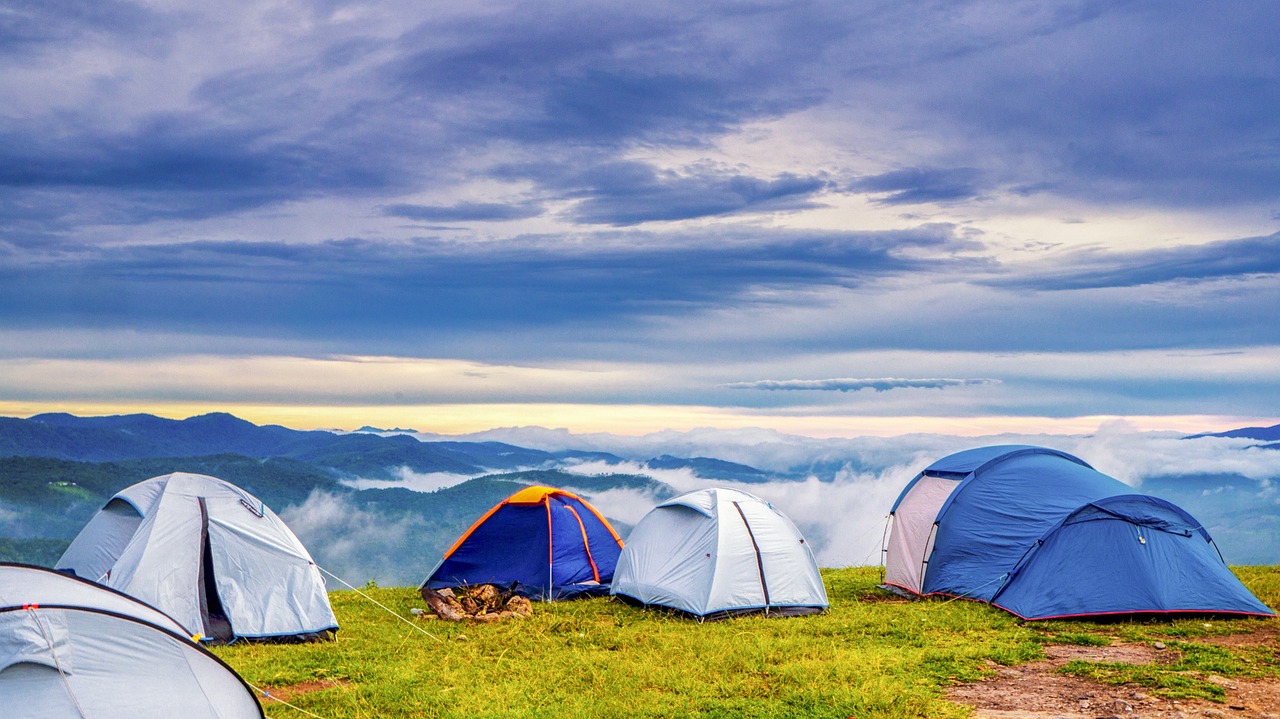 Tanzania offers a wide range of safari lodges and camps to suit different budgets and preferences. Here are some options to consider: Tanzania safari and Zanzibar holiday packages
Tanzania offers a wide range of safari lodges and camps to suit different budgets and preferences. Here are some options to consider: Tanzania safari and Zanzibar holiday packages
Luxury Safari Lodges in Tanzania
– Singita Sasakwa Lodge: Located in the Grumeti Game Reserve, this lodge offers luxurious suites and breathtaking views of the surrounding landscape. (from $2,045 per person per night)¹
– Four Seasons Safari Lodge Serengeti: Situated in the heart of the Serengeti, this lodge offers luxurious rooms and suites, as well as a spa and fitness center. (from $902 per person per night)
– Singita Faru Faru Lodge: Located in the Grumeti Game Reserve, this lodge offers luxurious suites and a range of activities, including game drives and walking safaris. (from $2,045 per person per night)
Mid-Range Safari Lodges in Tanzania
– Dunia Camp: Located in the Serengeti, this camp offers comfortable tented suites and a range of activities, including game drives and walking safaris. (from $494 per person per night)
– Lemala Ewanjan Tented Camp: Situated in the Serengeti, this camp offers comfortable tented suites and a range of activities, including game drives and walking safaris. (from $429 per person per night)
– Siringit Serengeti Camp: Located in the Serengeti, this camp offers comfortable tented suites and a range of activities, including game drives and walking safaris. (from $547 per person per night)
Budget-Friendly Safari Lodges in Tanzania
– Mbali Mbali Soroi Serengeti Lodge: Located in the Serengeti, this lodge offers comfortable rooms and a range of activities, including game drives and walking safaris. (from $370 per person per night)
– Nomad Serengeti Safari Camp: Situated in the Serengeti, this camp offers comfortable tented suites and a range of activities, including game drives and walking safaris. (from $745 per person per night)
– Kusini Safari Camp: Located in the Serengeti, this camp offers comfortable tented suites and a range of activities, including game drives and walking safaris. (from $945 per person per night)
Photographic Safari in Tanzania
 A photographic safari in Tanzania can be a dream come true for wildlife and photography enthusiasts. Here’s a guide to help you plan an unforgettable photographic safari in Tanzania: Tanzania safari and Zanzibar holiday packages
A photographic safari in Tanzania can be a dream come true for wildlife and photography enthusiasts. Here’s a guide to help you plan an unforgettable photographic safari in Tanzania: Tanzania safari and Zanzibar holiday packages
Best Time for Photography Safaris in Tanzania
The best time for photography in Tanzania is during the dry season, from June to October. This period offers:
– Clear skies and soft, golden light
– Low vegetation, making it easier to spot wildlife
– The Great Migration in the Serengeti, offering unparalleled photography opportunities
Essential Photography Gear for Tanzania
– Camera Body: A full-frame DSLR or mirrorless camera is ideal for wildlife photography.
– Lenses: A telephoto lens (at least 200mm) and a wide-angle lens (between 10-24mm) are essential for capturing wildlife and landscapes.
– Tripod: A sturdy tripod will help you stabilize your camera, especially during low-light conditions.
– Memory Cards: Bring plenty of memory cards to store your photos.
– Battery Pack: A portable battery pack will ensure your camera stays charged throughout the day.
Top Photography Destinations in Tanzania
- Serengeti National Park: Witness the Great Migration, one of the most spectacular wildlife events on the planet.
- Ngorongoro Conservation Area: Capture the stunning scenery and diverse wildlife of the Ngorongoro Crater.
- Tarangire National Park: Photograph the majestic baobab trees and abundant wildlife, including elephants and lions.
- Lake Manyara National Park: Take stunning photos of the lake’s diverse birdlife and the park’s unique tree-climbing lions.
Tanzania Photography Safari Tips
- Golden Hour: Take advantage of the soft, golden light during the early morning and late afternoon.
- Know Your Subject: Research and understand the behavior and habitats of the wildlife you want to photograph.
- Be Patient: Wildlife photography requires patience, so be prepared to spend hours waiting for the perfect shot.
- Respect Your Subject: Keep a safe distance from wildlife and avoid disturbing them or their habitats.
Guided Photography Safaris
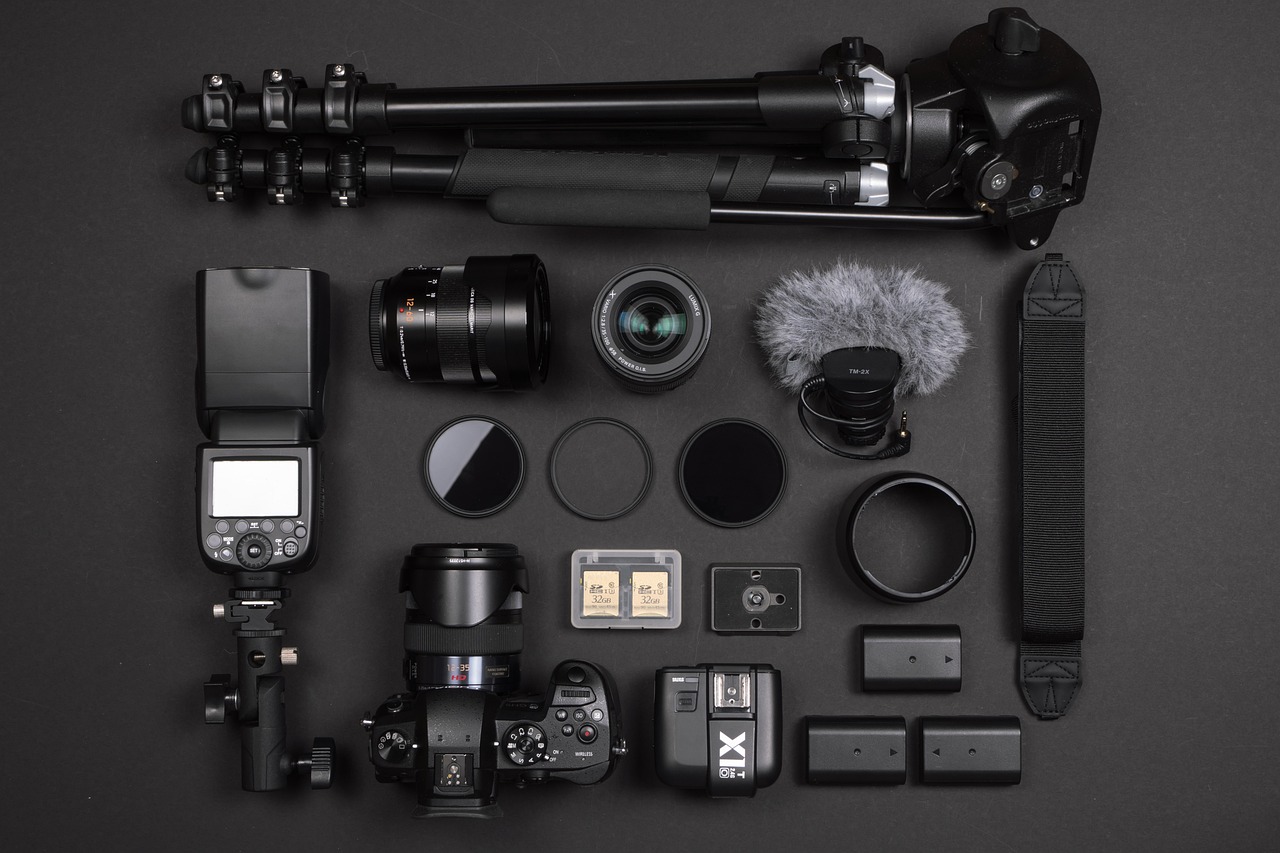 Consider joining a guided photography safari with a knowledgeable guide and photographer. This will help you on your Tanzania safari and Zanzibar holiday packages:
Consider joining a guided photography safari with a knowledgeable guide and photographer. This will help you on your Tanzania safari and Zanzibar holiday packages:
– Get expert advice on photography techniques and equipment
– Access exclusive locations and photographic opportunities
– Learn about the behavior and habitats of the wildlife you’re photographing
Responsible Wildlife Photography
– Respect Wildlife: Keep a safe distance from wildlife and avoid disturbing them or their habitats.
– No Baiting: Never bait or lure wildlife for photography purposes.
– No Flash: Avoid using flash photography, as it can disturb or harm wildlife.
– Support Conservation: Support conservation efforts and responsible tourism practices that promote the protection of wildlife and their habitats.
Where is Tanzania
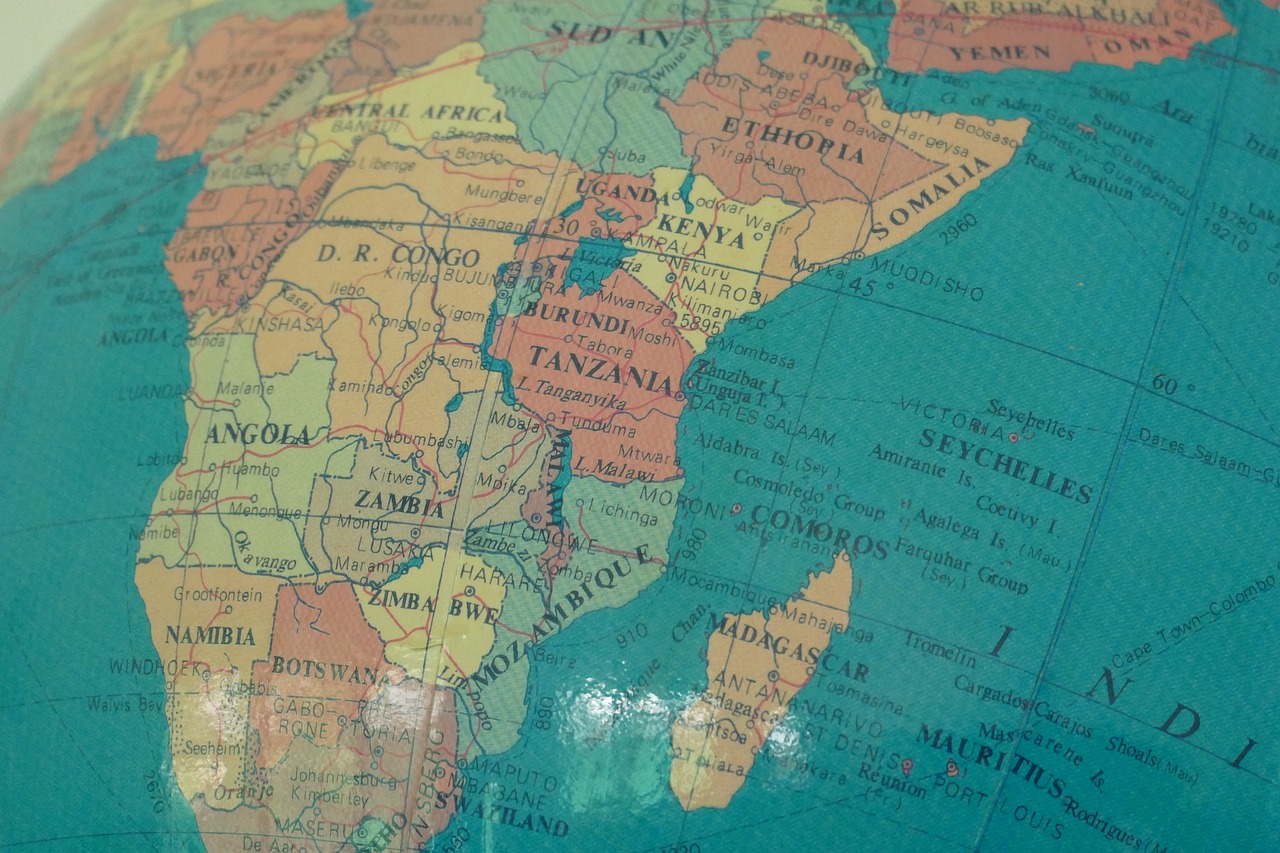 Tanzania is a country located in East Africa. It is situated just south of the equator and borders the Indian Ocean to the east. Tanzania shares borders with several countries, including:
Tanzania is a country located in East Africa. It is situated just south of the equator and borders the Indian Ocean to the east. Tanzania shares borders with several countries, including:
– Kenya to the north
– Uganda to the northwest
– Rwanda, Burundi, and the Democratic Republic of the Congo to the west
– Zambia, Malawi, and Mozambique to the south
Tanzania comprises a vast territory, with a total area of approximately 945,087 square kilometers (364,900 square miles). The country’s diverse geography includes:
– Mountains: Tanzania is home to several mountain ranges, including Mount Kilimanjaro, Africa’s highest peak.
– Plains: The country’s central plateau is characterized by rolling plains and savannas.
– Coastline: Tanzania’s eastern border is formed by the Indian Ocean, with a coastline stretching over 1,400 kilometers (870 miles).
– Islands: Tanzania has several islands, including Zanzibar, Pemba, and Mafia Island.
Tanzania’s unique geography and location make it a fascinating country to explore, with a diverse range of cultures, landscapes, and wildlife.
Tanzania Birding Tours
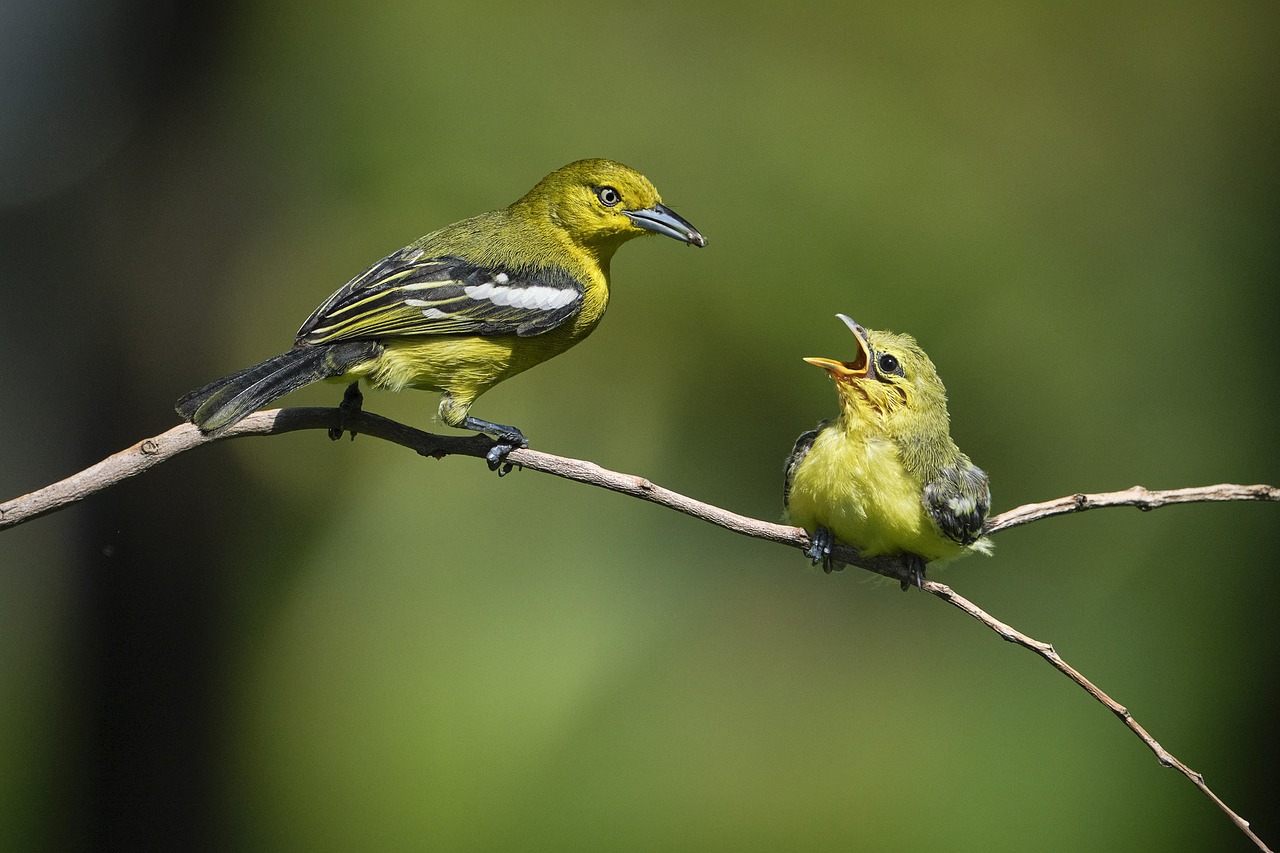 Tanzania is a paradise for birdwatchers, with over 1,000 species of birds recorded in the country. Here are some details about Tanzania birding tours: Tanzania safari and Zanzibar holiday packages
Tanzania is a paradise for birdwatchers, with over 1,000 species of birds recorded in the country. Here are some details about Tanzania birding tours: Tanzania safari and Zanzibar holiday packages
Best Time for Birding
The best time for birding in Tanzania is during the dry season, from June to October. This period offers better weather conditions and easier access to birding sites.
What to Bring while Birding in Tanzania
- Binoculars: A good pair of binoculars is essential for birdwatching.
- Field guide: A field guide to the birds of Tanzania will help you identify species.
- Spotting scope: A portable spotting scope can be useful for observing birds at longer distances.
- Camera: A camera with a good telephoto lens can help you capture images of birds.
Safety and Precautions while Birding in Tanzania
- Malaria precautions: Take necessary precautions against malaria, such as using insect repellent and wearing long-sleeved clothing.
- Respect local communities: Be respectful of local communities and their customs.
- Follow park rules: Follow park rules and regulations to ensure your safety and the safety of the birds.
By following these guidelines and tips, you can have a successful and enjoyable birding tour in Tanzania.
Kilimanjaro Trekking Safaris
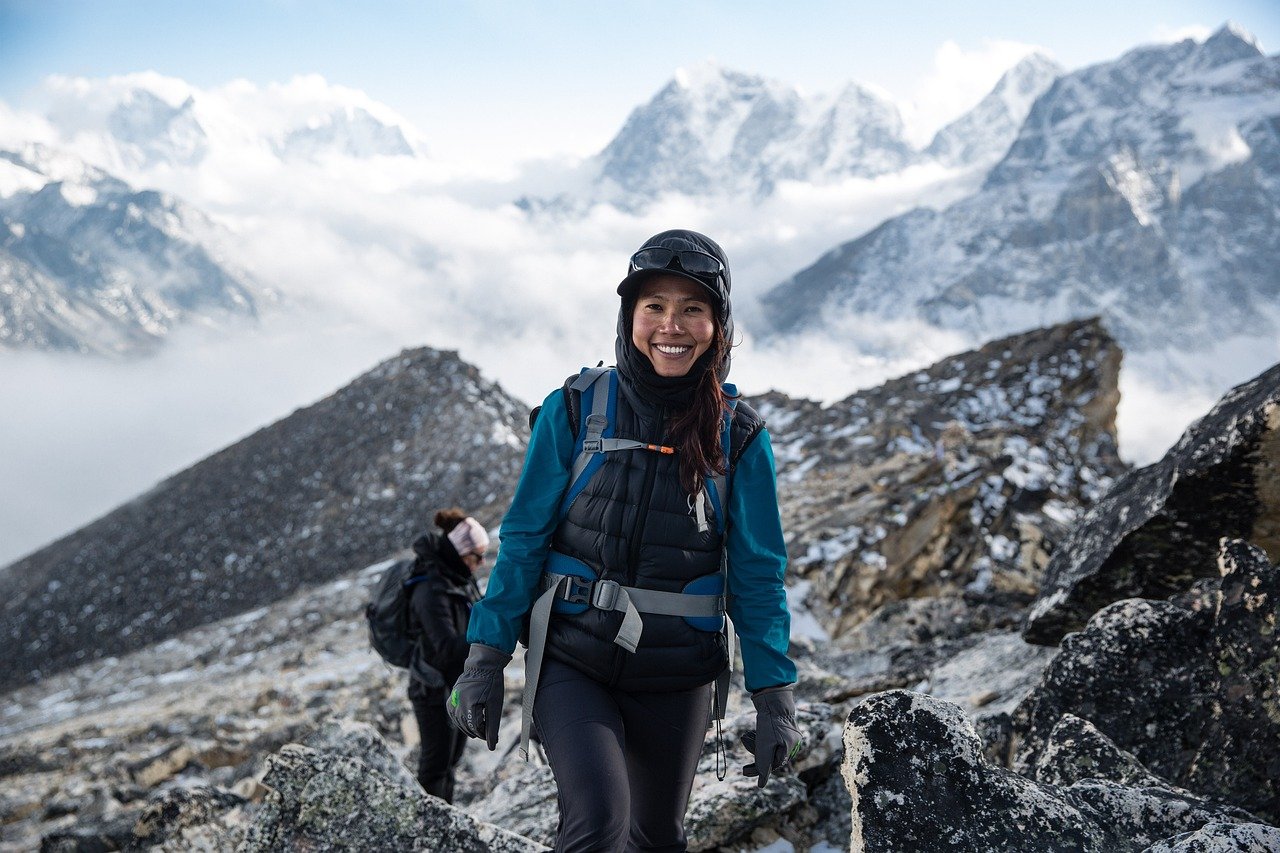 Kilimanjaro trekking safaris offer an unforgettable adventure to the rooftop of Africa. Here’s a comprehensive guide to help you plan your Kilimanjaro trekking safari: Tanzania safari and Zanzibar holiday packages
Kilimanjaro trekking safaris offer an unforgettable adventure to the rooftop of Africa. Here’s a comprehensive guide to help you plan your Kilimanjaro trekking safari: Tanzania safari and Zanzibar holiday packages
Best Time to Climb Kilimanjaro on your Tanzania safari and Zanzibar holiday packages
The best time to climb Kilimanjaro is during the dry season, from December to February or from June to October. These periods offer:
- Clear weather: Minimal rainfall and clear skies provide optimal climbing conditions.
- Comfortable temperatures: Daytime temperatures range from 20°C to 25°C (68°F to 77°F), while nighttime temperatures can drop to -10°C to -20°C (14°F to -4°F).
Kilimanjaro Climbing Routes
There are several routes to the summit of Kilimanjaro, each with its own unique characteristics and challenges:
- Marangu Route: The most popular route, known for its relatively easy ascent and comfortable accommodations.
- Machame Route: Considered one of the most scenic routes, with stunning views of the mountain and surrounding landscape.
- Lemosho Route: A longer, more gradual route that offers breathtaking views of the mountain and surrounding landscape.
- Rongai Route: A less crowded route that offers stunning views of the mountain and surrounding landscape.
- Umbwe Route: A challenging route that offers breathtaking views of the mountain and surrounding landscape.
Kilimanjaro Climbing Costs
The cost of climbing Kilimanjaro varies depending on the route, accommodations, and services:
- National Park Fees: $1,100 to $1,300 per person for a 6-day climb.
- Guides and Porters: $500 to $700 per person for a 6-day climb.
- Accommodations: $100 to $300 per person per night for lodge accommodations.
- Food and Transportation: $500 to $700 per person for a 6-day climb.
Climbing Kilimanjaro Safety
Climbing Kilimanjaro can be a challenging and potentially hazardous adventure:
- Altitude Sickness: Climbers may experience altitude sickness, which can be fatal if not recognized and treated promptly.
- Weather Conditions: Climbers may encounter extreme weather conditions, including snow, ice, and high winds.
- Physical Condition: Climbers should be in good physical condition and prepared for the demands of high-altitude climbing.
Climbing Kilimanjaro Tips
Here are some tips to help you prepare for your Kilimanjaro trekking safari:
- Train and Prepare: Train and prepare physically and mentally for the climb.
- Hire a Guide: Hire a certified guide and porters to ensure your safety and success.
- Pack Essential Gear: Pack essential gear, including warm clothing, waterproof gear, and first aid supplies.
- Stay Hydrated: Stay hydrated by drinking plenty of water throughout the climb.
- Respect the Mountain: Respect the mountain and its environment by following park rules and regulations.
Car Rental in Tanzania
 Car rental in Tanzania offers a convenient way to explore the country’s stunning landscapes and wildlife. You can choose from a variety of vehicles, including 4×4 options, to suit your needs and budget. Tanzania safari and Zanzibar holiday packages
Car rental in Tanzania offers a convenient way to explore the country’s stunning landscapes and wildlife. You can choose from a variety of vehicles, including 4×4 options, to suit your needs and budget. Tanzania safari and Zanzibar holiday packages
Car Rental Options in Tanzania
– 4×4 Toyota Landcruiser Double Cab for camping adventures¹
– 4×4 Toyota Rav4 for a more budget-friendly option²
– Safari land cruisers and safari vans for group tours or family trips
– Saloon cars and luxury cars for town driving or special occasions
Tips and Reminders while renting cars in Tanzania
– Make sure to check the car’s insurance and roadworthiness before renting
– Consider hiring a driver or guide if you’re not familiar with Tanzanian roads or wildlife
– Always follow local road rules and regulations to ensure a safe and enjoyable trip
Zanzibar Tours And Holidays
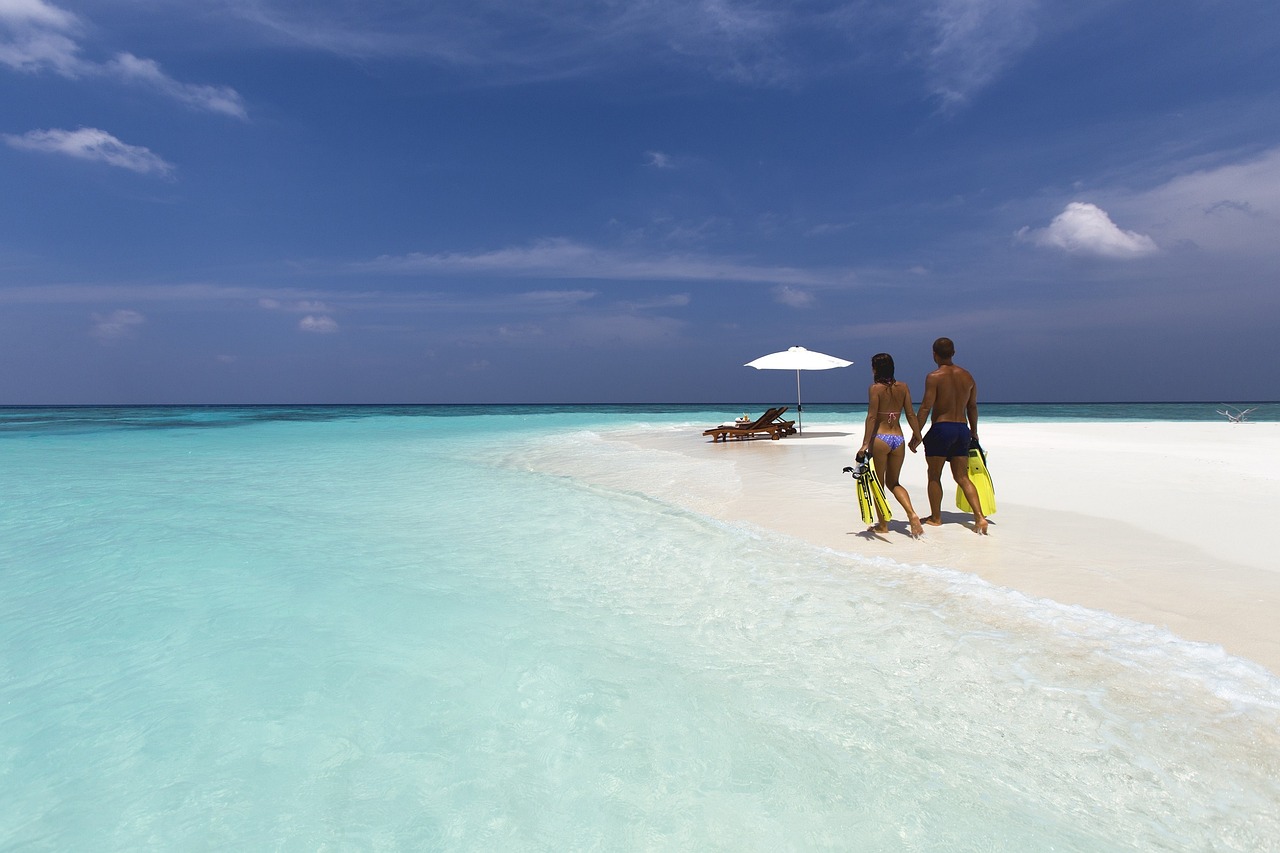 Zanzibar is a fantastic destination for a holiday, offering a unique blend of relaxation, culture, and adventure. Located off the coast of Tanzania, this beautiful island is known for its stunning beaches, crystal-clear waters, and rich history. Tanzania safari and Zanzibar holiday packages
Zanzibar is a fantastic destination for a holiday, offering a unique blend of relaxation, culture, and adventure. Located off the coast of Tanzania, this beautiful island is known for its stunning beaches, crystal-clear waters, and rich history. Tanzania safari and Zanzibar holiday packages
Top Experiences in Zanzibar for your Tanzania safari and Zanzibar holiday packages
– Explore Stone Town: Walk through the narrow streets of this ancient town, taking in the historic architecture, bustling markets, and vibrant culture.
– Relax on the Beach: With its picturesque beaches and crystal-clear waters, Zanzibar is the perfect spot to unwind and soak up the sun.
– Go Snorkeling or Diving: Discover the incredible marine life of Zanzibar, with numerous dive sites and snorkeling opportunities available.
– Take a Spice Tour: Learn about the island’s famous spice plantations and discover the unique flavors and aromas of Zanzibar.
Tanzania safari and Zanzibar Tour Packages
There are many tour packages available to suit different interests and budgets. Some popular options include:
– Zanzibar Beach Holiday: Relax on the beach and enjoy water sports, snorkeling, and diving.
– Stone Town Tour: Explore the historic town, including its markets, architecture, and cultural attractions.
– Spice Island Tour: Visit spice plantations, learn about the island’s history, and enjoy local cuisine.
– Adventure Tour: Go snorkeling, diving, kitesurfing, or take a boat tour to explore the island’s marine life.
Getting To Zanzibar and Accommodations
Zanzibar is easily accessible by air, with flights from major airports in Tanzania and Kenya. There are also ferry services available from Dar es Salaam.
Accommodation options range from budget-friendly guesthouses to luxury resorts and hotels. Many tour packages include accommodation, but you can also book separately to suit your preferences.
Overall, Zanzibar is a fantastic destination for a holiday, offering something for everyone. Whether you’re looking for relaxation, adventure, or cultural experiences, Zanzibar has it all. Tanzania safari and Zanzibar holiday packages
Why Choose Africa Reveal Safaris for your Tanzania safari and Zanzibar holiday packages?
– Experienced Guides: Our guides are experienced and knowledgeable about Tanzania’s wildlife, culture, and history.
– Customized Safaris: We offer customized safaris to suit your needs and preferences.
– Safety First: We prioritize safety, and ensure that all our safaris are conducted with safety in mind.
– Competitive Prices: We offer competitive prices for our safaris, and ensure that you get the best value for your money.
Book Your Tanzania safari and Zanzibar holiday packages Today!
Don’t miss out on this incredible opportunity to experience the best of Tanzania’s wildlife, culture, and natural beauty. Contact us to book your Tanzania safari today!
[/vc_column_text][/vc_column][/vc_row]
Tanzania Safaris Tour Packages
12 Days Kenya & Tanzania Safari traverses the major parks of Kenya and Tanzania, the Wildebeest Migration in Serengeti and Maasai Mara. Explore the Ngorongoro Crater, Lake Manyara Park, and Tarangire National Park. Read More
10 Days Tanzania Wildlife Tour meets your travel expectations for wildlife and the entire wilderness in the thick trees in the park. A visit to Lake Manyara is worth your eyesight for tree-climbing lions, baboons. Read More
9 Days Classic Tanzania Safari – Embark on the breathtaking landscapes of Tanzania, from the savanna plains that teem with zebras and wildebeests to the deep caldera of Ngorongoro Crater, where an incredible. Read More
7 Days Tanzania wildlife safari, you will get to see some of Africa’s most amazing creatures including the African Elephant, the Africa big cat family, the black rhino. Read More
Start on an unforgettable adventure in Tanzania for 5 Days Tanzania Wildlife Safari searching for the African “big five” and gaining insights into the culture of the indigenous Maasai. Read More
3 Days Ngorongoro Crater Safari visit in Tanzania brings you the best experience of the conservation area from its history to the present. Read More
8 Days Tanzania Chimpanzee Trekking Safari – Embark on your safari to the remote shorelines of Lake Tanganyika to explore the forests of Mahale Mountains National Park. Read More
10 Days Tanzania Wildlife Safari covers Katavi National park that’s located in Katavi region. The park is ranked 3rd largest national park in Tanzania comprising of Katuma River. Read More
4 Days Gombe Chimpanzee Trekking Safari – Gombe Stream National Park is located in the western region of Kigoma, Tanzania. Read More
6 Days Kilimanjaro Climbing Safaris – Umbwe Route. Because the ascent profile does not allow climbers much time to acclimatise to the altitude, Umbwe is generally avoided. It has an extremely poor success rate. Read More
